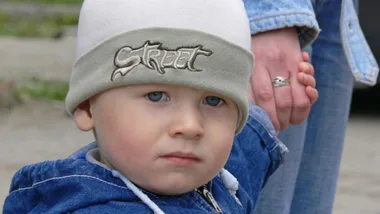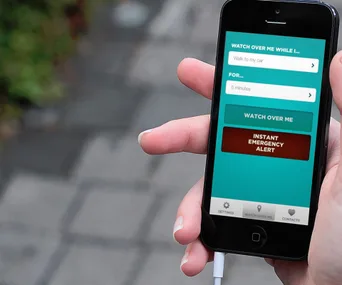Ten dollars is a small price to pay if it could save a child’s life. That’s the message being touted by road safety activists asking Australians to put life saving, lifelike and life-size stickers of running children onto their wheelie bins to encourage drivers to slow down, look twice and not become complacent on suburban roads.
It’s a simple idea for a crucial cause. In the last twelve months alone there have been 1269 deaths on Australian roads; the highest figures seen since 2012.
According to the experts this is at least in part due to drivers thinking, ‘I know this area like the back of my hand,’ instead of acknowledging that risk could always be just around the corner.
To counteract this trend countless neighbourhoods across Australia have already transformed their curbs into warning-signs for motorists. And so far it appears the campaign is working, with most drivers hitting the brakes upon passing the sticker-clad bins.

Having the stickers on the side of the bin allows for adequate time for the driver to sight the graphic.
Russell White is the CEO of the Australian Road Safety Foundation, the organisation distributing the stickers. He has spent over 25 years working in road safety and says the campaign is stronger than others because communities see it as a simple and cheap way to encourage drivers to slow down and stay alert to the possibility of children being on or near the roads.
More than 30 per cent of crashes occur in suburban streets where speed limits are under 60 km/hour. This is because drivers go into autopilot mode when close to home, Mr White says.
“We find a lot of crashes occur in a small radius of where someone has just left. That’s because road-users start to mentally make the leap to their next task as they are getting closer to home.
“They begin to relax a bit and think about what they are going to do once they get there. The negative side of that familiarity is they can get a bit complacent.”
The stickers were first introduced in April as part of a small pilot program in Queensland. Their real-time risk reminder resonated so strongly with locals that they have now been rolled-out nation wide.
Many councils have even put in bulk orders to distribute to their neighborhoods, Mr White says, causing the ASRF to consider expanding the sticker range to animals, the elderly or other vulnerable groups too.
Some critics have raised concerns that drivers will become desensitised to the stickers if driving past the same bins frequently, but the ASRF are confident that driver perception will change as the bins are wheeled on and off curbsides before and after rubbish-collection days.
Research indicates the stickers will also increase situational awareness, brake performance and reaction time, ensuring the benefits– particularly around school zones– far outweigh any ‘shock value’, Mr White says.

The stickers have been designed to raise the general awareness of vulnerable road users in local streets.
“Sometimes people get overwhelmed at how one person can make a difference when it comes to road trauma. What the stickers do is allow them to show support and make a contribution in a really visual way.
“Whole neighborhoods are doing it and the sense of community ownership they have is incredibly powerful. We want to try and wake people up to the level of risk in our own suburban streets and driveways.”
You can purchase the stickers and encourage your friends and family to get on board too here. It’s worth it to save a life.





